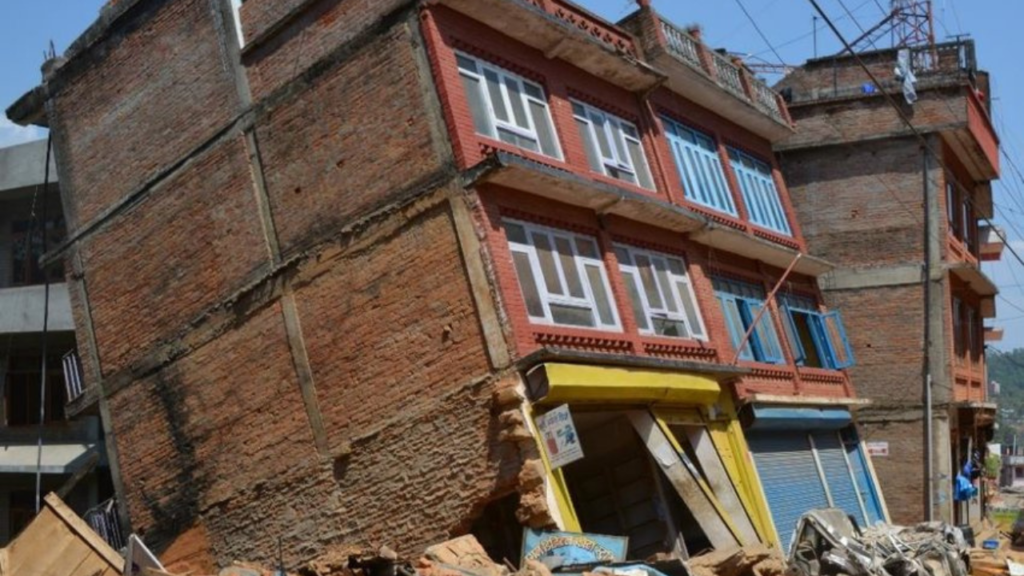The foundation is the lifeline of any building.
Once it fails, the entire structure is at risk.
In Nigeria, foundation problems are one of the leading causes of building collapse.
Cracks on the wall, uneven floors, sinking structures, or doors that don’t close properly are all red flags that your foundation might be in trouble.
The good news? Most foundation problems can be prevented or fixed if detected early and handled properly.
In this article, Bullionrise consult will explore common foundation problems, what causes them, and how to solve them to avoid building collapse in Nigeria.
Table of Contents
ToggleSee related – Which foundation is suitable for which soil?

Common Foundation Problems in Nigeria
- Cracks in walls or floors
- Uneven or sloping floors
- Foundation settlement (sinking)
- Water seepage or flooding in the foundation area
- Gaps between walls and windows/doors
- Bulging or bowing walls
What Causes Foundation Problems in Nigeria?
- Poor soil conditions (e.g. clay or swampy soil)
- No soil test before construction
- Wrong foundation type for the soil
- Poor drainage around the building
- Use of substandard materials
- Overloading the foundation with extra floors
- Shoddy workmanship or design flaws
How to Solve Foundation Problems and Prevent Collapse
1. Conduct a Proper Soil Test Before Building
Always carry out a geotechnical soil test before you build. It tells you:
- The type of soil
- Water table level
- Bearing capacity of the ground
Conducting a Proper Soil Test Before Building helps you choose the right foundation type (e.g. raft, strip, or pile) suitable for the soil.
2. Use the Right Foundation for the Soil
- Use raft or pile foundation in swampy, sandy, or clayey areas.
- Use strip or pad foundation on firm laterite or rocky soil.
Using the right foundation for the soil prevents differential settlement or cracking due to weak soil support.
3. Ensure Proper Drainage System Around the Building
- Install gutters and drains to channel water away from the foundation.
- Avoid water pooling near the base of your house.
Water weakens the soil and causes foundation movement. A dry base is a strong base.
4. Use Quality Materials and Skilled Workers
- Use cement, iron rods, blocks, and concrete of standard quality
- Hire certified engineers, builders, and artisans
- Supervise site activities closely
Strong materials and proper workmanship give your foundation the strength to carry the building for decades.
5. Repair Cracks and Settlement Early
- Inject cracks with epoxy or non-shrink grout
- Add underpinning (supporting weak foundations with extra columns or beams)
- Use micro-piling or jacketing to stabilize sinking foundations
Early repairs prevent minor problems from turning into a full-blown building collapse.
6. Don’t Overload the Foundation
- Don’t add extra floors to a building if the foundation wasn’t designed for it
- Consult an engineer before any vertical extension
Avoids over-stressing the foundation and keeps your building stable.
7. Routine Inspection and Maintenance
- Check for signs of cracks, moisture, or tilting walls regularly
- Hire professionals to inspect your building yearly, especially in flood-prone areas
Routine inspection and maintenance helps you detect and fix hidden issues early.
Conclusion
Foundation problems are not only expensive to fix they are dangerous.
A weak foundation is a silent time bomb that can bring down your building in seconds.
To avoid building collapse in Nigeria:
- Start with a soil test
- Choose the right foundation type
- Use quality materials
- Prevent water around your building
- Fix cracks and settlements immediately
Prevention is always cheaper than disaster. Build right, build safe.
Frequently asked questions
What are the common causes of foundation problems that lead to building collapse?
Foundation issues can arise due to poor soil conditions, inadequate drainage, and faulty construction practices.
Using substandard materials or failing to conduct proper soil testing before construction can weaken the foundation.
Natural factors such as erosion, flooding, or seismic activity can also contribute to foundation instability.
Addressing these causes early is critical to preventing building collapse.
How can soil testing help prevent foundation issues?
Soil testing identifies the soil’s strength, stability, and load-bearing capacity, ensuring the foundation design is suitable for the conditions.
It can also detect potential risks like soil shrinkage, expansion, or poor compaction that might lead to foundation failure.
By analyzing soil properties, engineers can recommend the appropriate foundation type and construction techniques.
This proactive approach minimizes the likelihood of future problems.
What are the best methods for repairing foundation cracks?
Foundation cracks can be repaired using techniques like epoxy injection or polyurethane foam to fill and seal the cracks.
Larger cracks may require underpinning, where additional supports are installed to stabilize the foundation.
Replacing damaged sections or reinforcing the foundation with concrete is another effective method.
Prompt repairs prevent further deterioration and ensure the building’s safety.
How does proper drainage protect a building’s foundation?
Proper drainage prevents water accumulation around the foundation, reducing the risk of soil erosion and waterlogging.
Installing gutters, downspouts, and French drains helps redirect water away from the building.
Grading the land around the structure ensures surface water flows away from the foundation.
Effective drainage systems maintain soil stability and protect the foundation from moisture-related damage.
What role does regular maintenance play in preventing foundation failure?
Regular maintenance involves inspecting the foundation for cracks, uneven settling, or signs of water damage.
Addressing minor issues early prevents them from escalating into major problems.
Maintenance also includes keeping drainage systems functional and monitoring structural changes over time.
Consistent upkeep ensures the foundation remains strong and reduces the risk of collapse.







